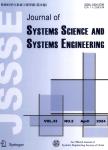A Cumulative Prospect Theory Based Counterterrorism Resource Allocation Method under Interval Values
作者机构:College of Systems Engineering National University of Defense TechnologyChangsha 410073 China The Sixty-third Research Institute National University of Defense Technology Nanjing 210007 China
出 版 物:《Journal of Systems Science and Systems Engineering》 (系统科学与系统工程学报(英文版))
年 卷 期:2019年第28卷第4期
页 面:478-493页
核心收录:
学科分类:0810[工学-信息与通信工程] 1205[管理学-图书情报与档案管理] 07[理学] 0802[工学-机械工程] 0811[工学-控制科学与工程] 0812[工学-计算机科学与技术(可授工学、理学学位)]
基 金:This work was supported in part by the National Natural Science Foundation of China under Grant Nos. 71690233 71501182 and 71571185. The authors would like to thank the Guest Editors and anonymous referees for furnishing comments and constructive suggestions that improved the quality of this paper.
主 题:Counterterrorism resource allocation cumulative prospect theory multiple attributes interval value
摘 要:Strategic resource allocation into decision-making model plays a valuable role for the defender in mitigating damage and improving efficiency in military environments.In this paper,we develop a defensive resource allocation model based on cumulative prospect theory (CPT),which considers terrorists psychological factors of decision-making in reality.More specifically,we extend existing models in the presence of multiple attributes and terrorists deviations from rationality using a multi-attribute cumulative prospect theory.In addition,interval values are used to cope with uncertainties regarding gain and loss.Comparative studies are also carried out to demonstrate the differences among minmax,Nash equilibrium (NE),and traditional probability risk analysis (PRA) strategies.Results show that the defender s optimal defensive resource allocation will change along with terrorists behaviors and the proposed model makes more sense compared with other traditional resource allocation strategies.



